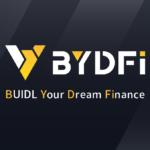Now Reading: 38 Additive Essentials for a High School Math Classroom
-
01
38 Additive Essentials for a High School Math Classroom
38 Additive Essentials for a High School Math Classroom

70
The new school year is knocking, and you’ve got big goals. But as you scan the room, you realize the supply shelf is looking a little empty. Time to grab your tablet and build the ultimate math classroom wish list, from everyday essentials to surprising tools you’ll wonder how you ever taught without. This isn’t just a checklist: It’s your blueprint of essentials for a high school math classroom that supports every learner and highlights your unique teaching style.
Gather the must-have essentials for a high school math classroom
Coming back from summer break can be a little chaotic, but setting up your classroom doesn’t have to be. Whether you’re a first-year teacher or just looking to stay organized, this quick checklist covers the essentials. Just check it off, stock up, and roll into the school year feeling confident and classroom-ready.
- Scientific calculators
- Protractors
- Calculator charging stations
- Rulers (both metric and standard)
- Dry-erase boards with and without graphing lines
- Large and small bins
- Color-coded turn-in trays
- Labels
- Document camera
- Flashcards
Factor in forgotten student supplies to stay one step ahead
Pencils, erasers, and sharpeners are classroom staples, but even the most organized high schoolers forget things now and then. That’s why having a cheerful “Grab What You Need” bin can be a lifesaver (and a stress-saver!).
Stocked with a few extra essentials for a high school math classroom, it’s a small way to set students up for success and eliminate pauses. Beyond the basics, here are a few helpful extras worth having on hand:
- Compasses
- Graphing paper
- Extra math journals
- Index cards (vocab and formulas)
- Sticky notes
- Scissors
- Highlighters
- Cloth tape measure
Today’s learners are different, and so is math! It’s more interactive and creative than ever before. These innovative tools are perfect for your parents’ wish list or to keep on hand for those moments when students need a fresh approach. Each one helps create a more inclusive and confidence-boosting math experience.
- Math Visuals & Wall Art: QR-coded concept posters and visuals like the Fibonacci golden spiral help students learn independently and visually, which is especially helpful for spatial and neurodiverse learners. They also make art come alive for a more energetic room.
- Magnetic/Foam Color-Coded Algebra Tiles: Help bridge the gaps for high school students by presenting abstract concepts in physical, color-coded ways. These are perfect for algebra worksheets and assignments.
- Magnetic Visual Timers: Allow students to build time awareness and self-regulate during assessments. These types of timers offer quiet support for those who need a visual countdown without causing stress for students who may experience time-related anxiety.
- Math Escape Room Kit: Turn review into a high-energy, collaborative challenge that deepens critical thinking and makes learning more memorable.
- Dry-Erase Clipboards: Collaborate without needing both a clipboard and a dry-erase board. They’re perfect for flexible seating and collaborative activities, giving users mobility and privacy.
- Fraction, Decimal, and Percent Wheel Dials: Strengthen number sense and help students convert with confidence, especially in finance or stats units.
- Probability Dice: Effective for interactive learning, games, concept review, or modeling outcomes, these also help to gamify math learning.
- Geometric Solids with Volume Formulas: Help students see the math with tools that let them visualize and manipulate shapes in geometry and pre-calc. Built-in formulas reinforce learning automatically, especially for visual-spatial learners.
- Fraction Tiles: Make abstract fractional reasoning concrete. These are must-haves for bridging foundational gaps.
- Wipe-Clean Graphing Grid Overlay: Gives students a reusable way to plot points, draw functions, and explore transformations. Students can make quick corrections, making graphing stress-free. It’s perfect for group work and simulations.
- Bendable Rulers: Help students accurately measure curves and circles in geometry with a tactile twist.
- 3D Coordinate Plane Model with Moveable Axes: Boost spatial skills and help abstract thinkers master 3D graphing in calculus.
- Geometry Stencils: Provide precise shapes and angles, saving time and reducing frustration. This allows students to focus on solving problems, not fixing sloppy sketches.
Cultivate a mathematically rich classroom culture with decor
Students might think math is just numbers in a book, but it’s so much more. The way you set up your classroom can help them see the meaning behind the numbers and how math shapes the real world.
According to UC State University, understanding data and statistics is key to avoiding manipulation and making informed decisions. That’s why having all the essentials for a high school math classroom is a must. With the right setup and a few of the tips below, you can cultivate the perfect math culture to grow confident critical thinkers.
- Add Real World Connections: Ditch the textbook-only numbers, and bring in real stats like stock prices, sports data, or local budgets. Students sharpen their math skills and build real-life know-how, like financial literacy for teens and data analysis.
- Organize Tools in an Easy-to-Find Way: Label all bins, shelves, and turn-in areas clearly. Set up a “Grab-and-Go” station with extra pencils, calculators, rulers, and graph paper for students who forget supplies. Classroom organization minimizes downtime and keeps the focus on learning.
- Provide Tools to Meet the Needs of Diverse Learners: Stock your classroom with hands-on tools like geometry solids and graphing whiteboards. These manipulatives help students see and touch math.
- Incorporate Writeable Surfaces Everywhere: Provide students with writable surfaces, such as whiteboards, clipboards, and laminated desk mats. This reduces anxiety about perfect answers and encourages exploration.
- Celebrate Math With Displays: Turn your bulletin boards and classroom door into “mathtastic” spaces that spark curiosity. Use them to showcase student work, real-world math connections, brain teasers, or rotating math challenges.
- Arrange Desks With Purpose: Create classroom seating arrangements with groups, like pairs, triads, or Kagan-style quads that boost collaboration, math talk, and problem-solving. Think about including desks that are easy to move, so you can create quick groups.
- Design a Math Challenge Station or Nook: Stock it with brainteasers, puzzles, and magnetic tools so students can unwind, explore, and fall in love with math on their own terms.
Ready to multiply student engagement, break down learning barriers, and up your classroom management game? This supply list supports all learners: visual, tactile, neurodiverse, or those craving real-world math connections. Take it a step further with high school math resources that elevate your teaching and empower every student to succeed. From interactive tools to visuals, these essentials for a high school math classroom help you teach beyond the textbook. This is your year to slay math education.













:max_bytes(150000):strip_icc()/GettyImages-2087336148-d578d065364543f199e0cf0b192e4f0c.jpg?w=1024&resize=1024,1024&ssl=1)
:max_bytes(150000):strip_icc()/GettyImages-2216750895-cede9b2ca19846308b4c29dc1c848368.jpg?w=1024&resize=1024,1024&ssl=1)
:max_bytes(150000):strip_icc()/GettyImages-2184830381-f7936b853e9e4da1b57d6ef23eac83bb.jpg?w=1024&resize=1024,1024&ssl=1)









.jpg?w=150&resize=150,150&ssl=1)

:max_bytes(150000):strip_icc()/GettyImages-2087336148-d578d065364543f199e0cf0b192e4f0c.jpg?w=150&resize=150,150&ssl=1)

